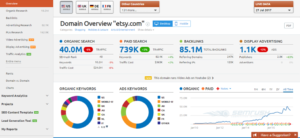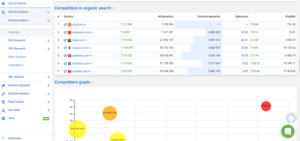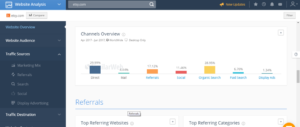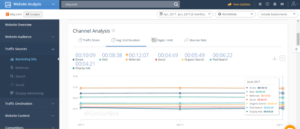We’ve all heard the adage: The best defense is a good offense. To have a good offense, you must understand your opponent’s strengths and weakness. In marketing, this is done through a competitive analysis. Since marketers do not have direct access to performance data from their competitors, they rely on third-party software to compile this data. While I was interning at Wunderman DC, I had the opportunity to work on a competitive audit for one of our clients. I have already mentioned some social listening platforms in a previous post so, here, I will focus on SEM and SEO analysis platforms.
First, let’s define SEM and SEO. SEM stands for search engine marketing. It has essentially come to mean paid search (i.e. the sponsored links you see at the top of Google searches). SEO is the other side of the coin. It stands for search engine optimization. SEO essentially means improving the content of your website to organically rank high on Search Engine Results Pages (SERPs). Since Google is constantly updating its search algorithm, SEO techniques are always changing. Nevertheless, there are a couple main pillars to SEO that remain constant year over year. While SEO involves a great deal of effort and time, it has the potential to drive high-quality traffic to your site.
Now that we have defined SEO and SEM, let’s take a look at the various platforms that report on and analyze these metrics.







Content was valuable,Thank you and your good site